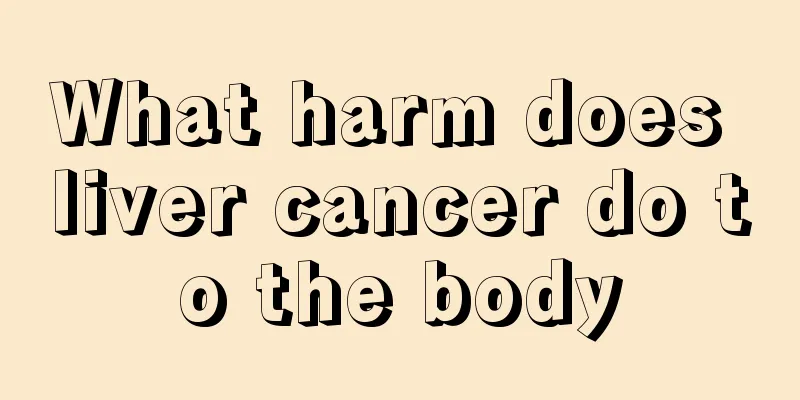Is black stain on teeth a sign of tooth decay? What are the symptoms of tooth decay?

|
There are many reasons for the appearance of black stains on teeth. In addition to long-term smoking, lack of attention to oral hygiene, and failure to clean teeth properly, it may also be caused by eating too many sweets, leading to tooth decay. If it is tooth decay, then you must go to the hospital for treatment, and then develop reasonable eating habits and oral hygiene habits after treatment. Here are some symptoms of tooth decay. 1. Areas prone to dental caries The areas where caries are prone to occur are closely related to whether food is easily retained. Some places on the tooth surface that are difficult to clean, where bacteria and food debris are easily retained, accumulate more plaque, and are prone to cause caries. These areas are the areas where caries are prone to occur, including: pits and fissures, proximal surfaces and tooth necks. The pits and fissures of teeth are defects left over from the process of tooth development and mineralization, and are also the primary site of caries. The adjacent surfaces of teeth are the second most common site for caries after the pits and fissures. They are generally caused by food impaction due to wear of the adjacent contact surfaces or atrophy of the interdental papilla. The neck of the tooth is the junction of the enamel and dentin, which is conducive to the retention of food and bacteria, and is also a weak link in the tooth tissue, especially when the enamel and cementum are not in contact and the dentin is directly exposed, caries are more likely to occur. 2. Teeth prone to caries Due to the characteristics of different tooth anatomical morphology and growth sites, the incidence of caries in different teeth varies. A large amount of epidemiological survey data show that the distribution of caries is basically symmetrical on the left and right sides, with more caries in the mandibular than in the maxillary, and more caries in the posterior teeth than in the anterior teeth. The mandibular anterior teeth have the lowest caries rate. 3. Degree of caries Clinically, dental caries can be seen to have changes in color, shape, and quality, with quality changes being the main ones. Color and shape changes are the result of quality changes. As the disease progresses, the lesions enter the dentin from the enamel, the tissue is constantly destroyed, and disintegrates to gradually form dental cavities. Clinically, dental caries are often divided into three stages: shallow, moderate, and deep according to the degree of caries. Each stage is manifested as follows: Shallow caries : also known as enamel caries, caries is limited to the enamel. In the early stage, it appears as chalky patches caused by demineralization on the smooth surface, which later become yellow-brown due to coloring, and the pits and fissures appear ink-soaked and diffuse. Generally, there are no obvious caries holes, only a rough feeling when probing. In the later stage, shallow holes limited to the enamel may appear, with no subjective symptoms and no response to probing. Moderate caries : caries has reached the shallow layer of dentin. Clinical examination shows obvious cavities. There may be tenderness on probing. There may be pain response to external stimuli (such as cold, heat, sweet, sour and food embedded in the teeth). The pain disappears immediately when the stimulus is removed. There is no spontaneous pain. Deep caries : caries has reached the deep layer of dentin, generally manifested as large and deep caries holes, or small entrances with more extensive damage in the deep layer. The reaction to external stimuli is more severe than that of medium caries, but after the source of stimulation is removed, the pain can still be relieved immediately, and there is no spontaneous pain. 4. Types of carious lesions (1) Chronic caries : Caries generally progress slowly, especially in adults. Most of them are chronic. Due to the long course of the disease, the texture is dry and there are fewer soft caries. Such patients have a longer repair process and usually have a hardened dentin layer at the bottom of the cavity. (2) Acute caries : It is more common in children, adolescents, pregnant women or people with poor health. The treatment course is short and the progress is fast. There are more soft caries, which are soft in texture and light in color, such as light yellow or chalky. They are easy to be dug out, and there is a lack of hardened dentin layer at the bottom of the cavity. (3) Silent caries : Because local cariogenic factors are eliminated, the progression of caries becomes very slow or stops completely, which is called silent caries. (4) Secondary caries : This is often caused when the carious tissue is not cleaned or the edges of the restoration are not tightly closed during the treatment of caries, forming cracks and leading to caries recurring. |
<<: What symptoms can artificial hearts treat?
>>: What are some tips for teeth whitening? Introduction to teeth whitening methods
Recommend
What are the symptoms of gastrointestinal cancer
Symptoms of gastrointestinal cancer may vary depe...
What are the harms of thyroid cancer to the human body?
What are the hazards of thyroid cancer to the hum...
What to do with shoulder periarthritis adhesion
The treatment of shoulder adhesion should be carr...
How to make your hair look good and simple
Hair is a very important part of the face. A good...
What's wrong with yawning in the morning
Yawning is the most normal phenomenon of our body...
What is the matter with thyroid cancer but unclear pathology
Thyroid cancer with unclear pathology may be an e...
How to wear a wig
When a person is tired of looking at his or her h...
What to do if there is a four-legged snake at home
The tetrapod is also what we often call a lizard....
Will it be contagious if I live with a stomach cancer patient?
Cancer is a relatively stubborn disease. If it is...
What are the symptoms of advanced lung cancer? Several symptoms of advanced lung cancer
Lung cancer is a disease that many patients lose ...
What are the symptoms of lung cancer? 9 lung cancer diagnosis methods you should also know
The main reason why many people die from lung can...
The efficacy and function of chicken bile
Chicken bile tastes very bitter. It is the juice ...
What medicine is the best for endometrial cancer
What medicine is most effective for endometrial c...
Why is it easy to feel sleepy in autumn
As the saying goes, spring makes you sleepy, summ...
Which mascara is good to use
Mascara is a must-have cosmetic every time you pu...









